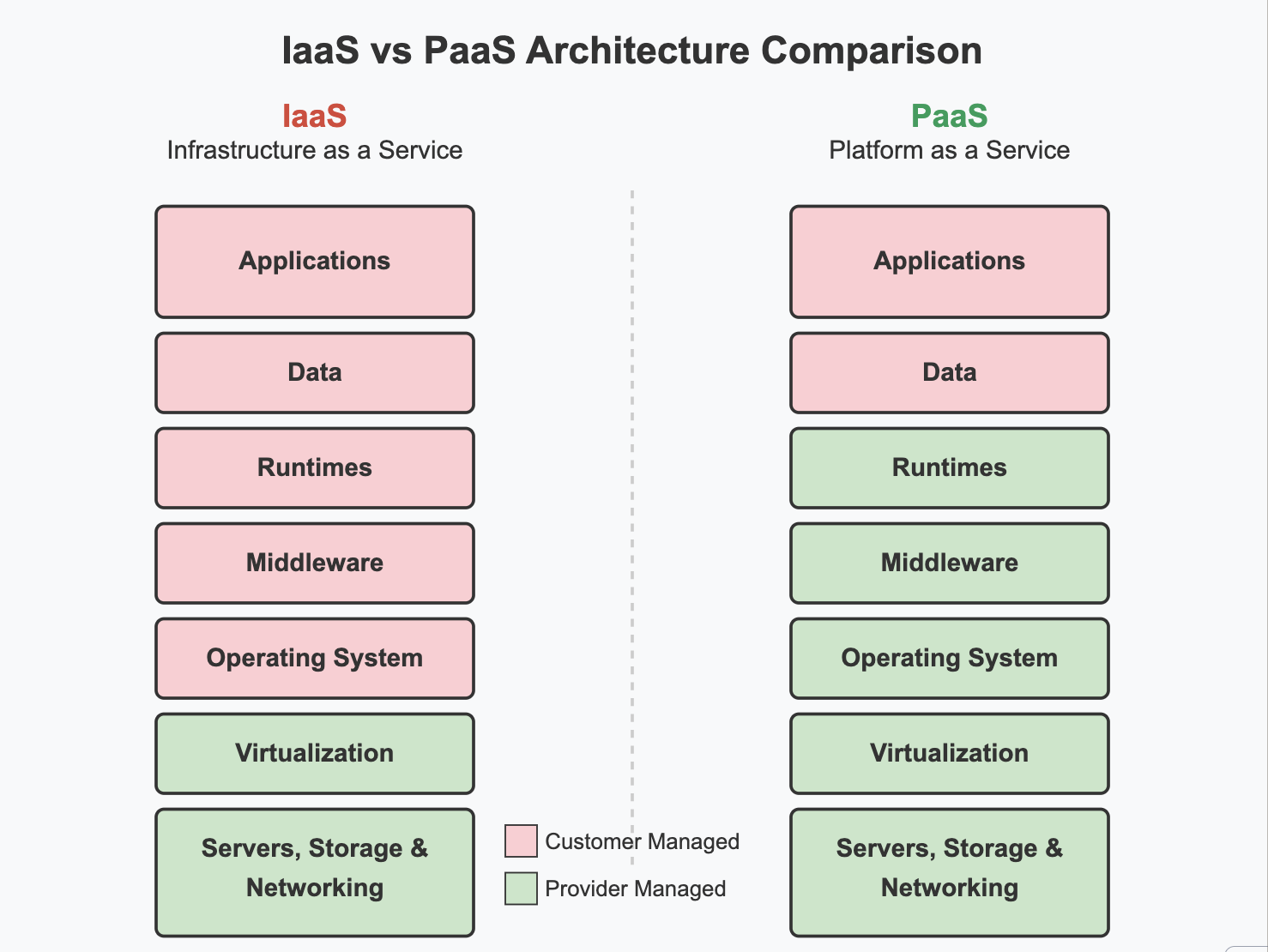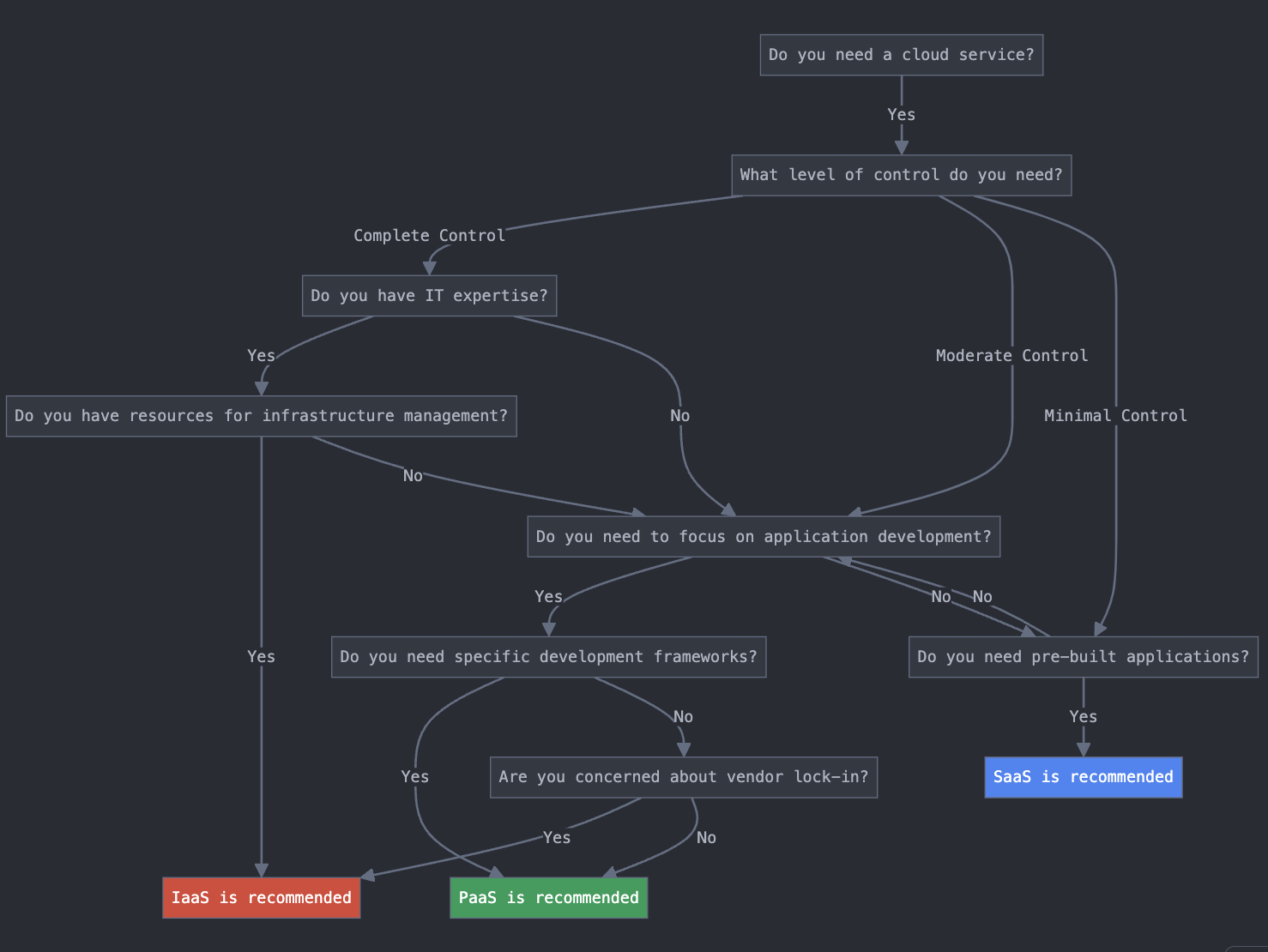Cloud Architecture Decisions: Choosing Between IaaS and PaaS.
 Ashish Dabral
Ashish DabralIn today’s AI-driven world, creating projects and applications can be exciting, and building them is often straightforward. However, software development is only part of the process. Software delivery is crucial because as your application grows, managing users and traffic effectively can become challenging. Therefore, choosing the right architecture that balances your application’s requirements and cost-effectiveness is essential.
With numerous services available in the market, choosing the right one can be overwhelming. Let’s explore what you should consider for your next application.
This article will focus on IaaS (Infrastructure as a Service) and PaaS (Platform as a Service).

When to Choose PaaS
If you can find a service provider that can handle software delivery while meeting your requirements, you should take advantage of it as much as possible. That's precisely what a good PaaS offers: out-of-the-box software delivery.
If a PaaS meets your requirements, you should use it, stick with it for as long as possible, and avoid recreating all those software delivery components until absolutely necessary. Here are a few scenarios where a PaaS is a good choice:
Side Projects
If you're working on a side project, the last thing you want is to lose your passion by spending all your time dealing with builds, pipelines, or networking. Instead, let a PaaS handle the heavy lifting.
Start-ups and Small Companies
If you're building a new company, starting with a PaaS is often the best approach. Startups are a race against time: Can you build something the market wants before you run out of money? As mentioned earlier, you can go live on a PaaS in minutes. For most startups, the scalability, availability, security, and compliance needs are minimal, allowing you to run on a PaaS for years before encountering limitations. It's only when you find product/market fit and need to scale your company—a good problem to have—that you may need to move off PaaS.
When to Choose IaaS
The following are scenarios where IaaS is usually a better fit:
Load
If you're dealing with a lot of traffic, PaaS pricing may become prohibitively expensive. Moreover, PaaS usually limits the types of apps and architectures you can use, so you may need to migrate to IaaS to scale your systems.
Company Size
As you grow from a handful of developers to dozens of teams with hundreds of developers, not only can PaaS pricing become untenable, but you may also encounter limits with governance and access controls (e.g., allowing some teams to make specific changes but not others).
Availability
Your business may need to provide uptime guarantees that exceed what your PaaS can offer. Additionally, when there is an outage or a bug, PaaS offerings often have limited visibility and connectivity options (e.g., Heroku doesn't allow server connections over SSH), so you may need to migrate to IaaS to improve your ability to debug and introspect your systems.
Security & Compliance
One of the most common reasons for leaving PaaS is that most of them (with the notable exception of Aptible) do not provide sufficient visibility, access, or control to meet security and compliance requirements (e.g., SOC 2, ISO 27001, PCI-DSS).
Choose IaaS whenever you need more control, performance, and/or security. If your company grows large enough, one or more of these needs will likely push you from PaaS to IaaS—just the price of success.

Summary
Every architecture, process, and tool has a cost, so you should use the simplest and most minimal solution that provides the benefits you're looking for and no more. Avoid using a complex architecture or software delivery process if a simpler one will suffice.
Subscribe to my newsletter
Read articles from Ashish Dabral directly inside your inbox. Subscribe to the newsletter, and don't miss out.
Written by

Ashish Dabral
Ashish Dabral
I am a student, who loves writing technology articles and learning in public.